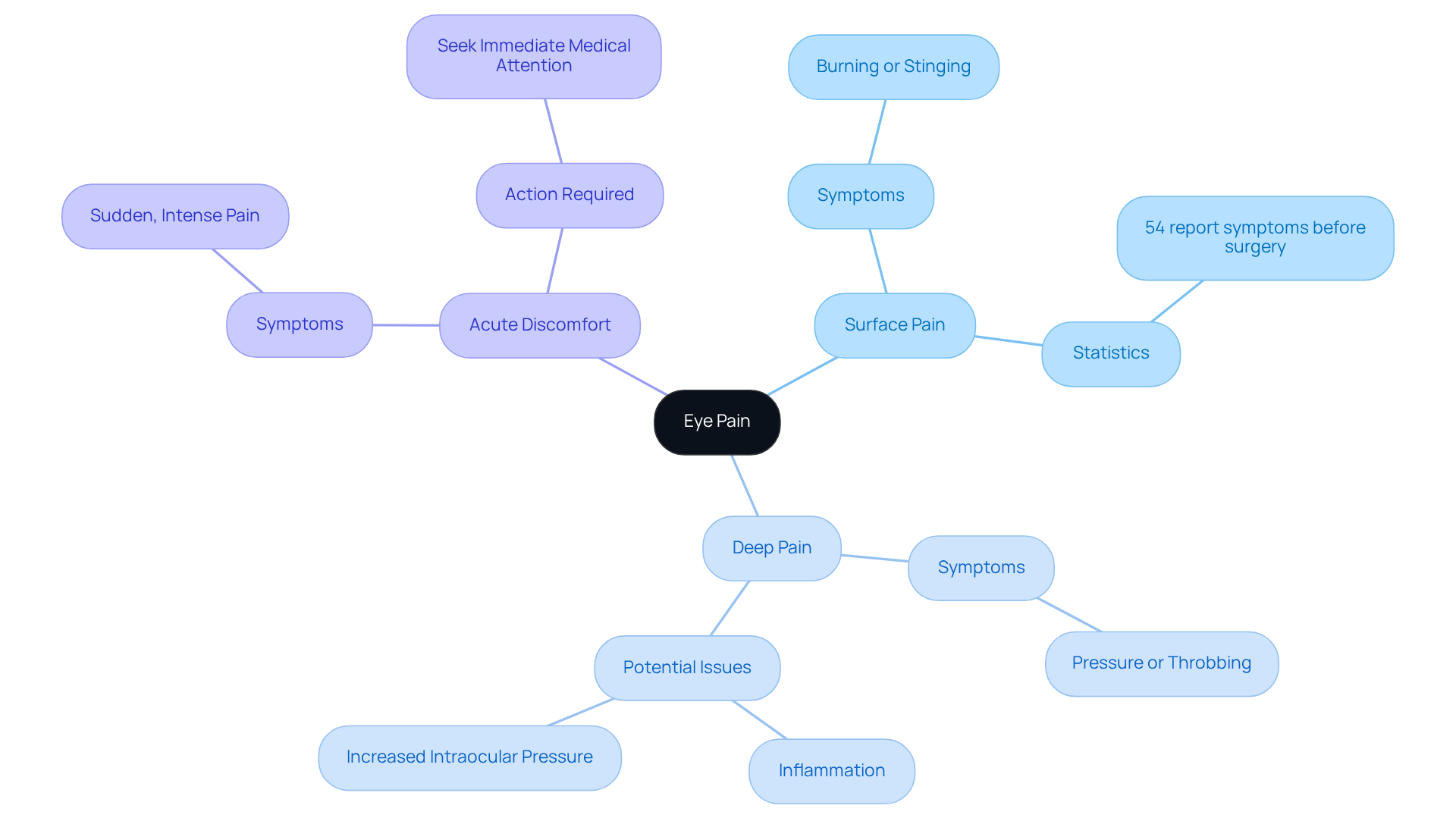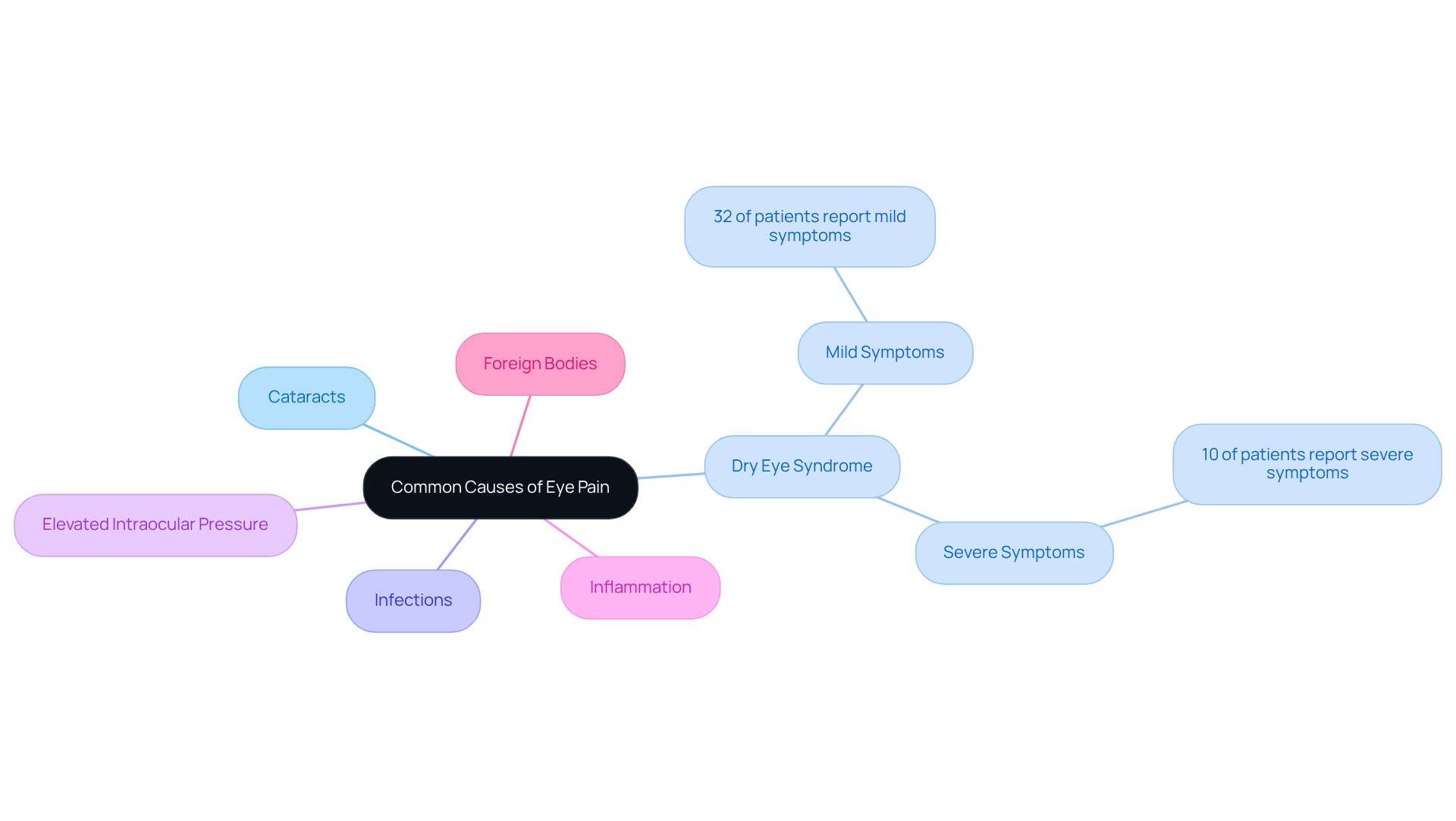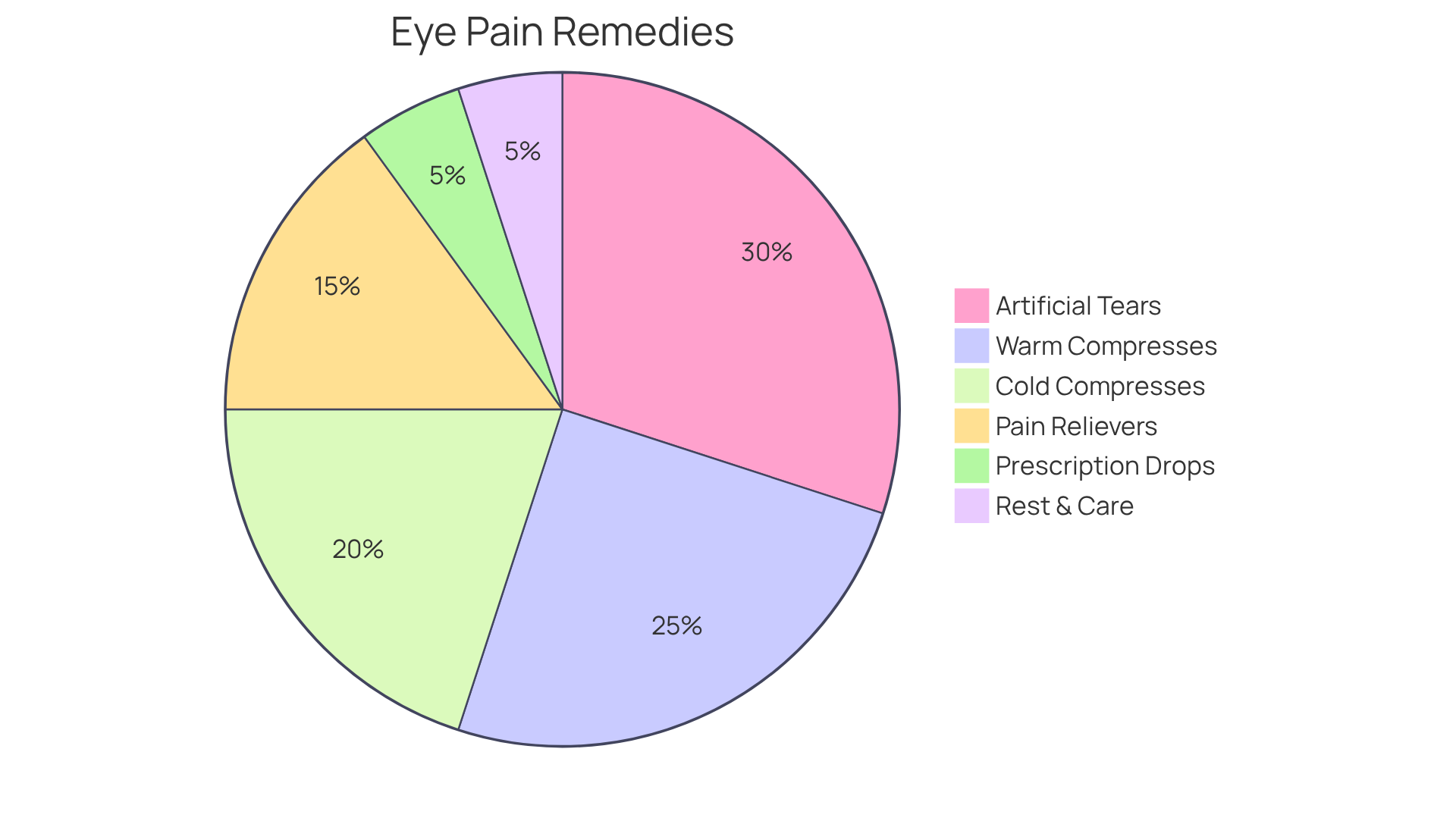Posted by: Northwest Eye in Cataracts, Vision Correction on November 18, 2025
Introduction
Understanding the complexities of eye pain is crucial for cataract patients. We know that discomfort can arise from various sources, including the condition itself and post-operative effects. This article explores the types of eye ache experienced by individuals with cataracts, offering insights into the underlying causes and effective remedies.
It’s common to feel uncertain about what you’re experiencing. How can you differentiate between normal discomfort and signs of a more serious issue? We’re here to help you navigate these concerns and provide steps you can take to alleviate your pain. Remember, you’re not alone in this journey.
Explore the Nature of Eye Pain
Eye ache can manifest in various ways, including sharp, throbbing, or aching sensations, causing discomfort in one or both eyes. If you’re dealing with cataracts, it’s important to understand these feelings, as they can arise from the condition itself or from the procedure. Here’s a closer look at common types of eye pain:
- Surface Pain: This often feels like burning or stinging, usually due to dry eyes or irritation. Many patients experience this, with 54% reporting such symptoms before surgery. Dry Eye Syndrome can really impact your comfort and vision, so it’s crucial to talk to your Northwest Eye doctor about any symptoms, including blurred vision.
- Deep Pain: This sensation might feel like pressure or throbbing, which could signal underlying issues like inflammation or increased intraocular pressure, especially after surgery.
- Acute Discomfort: If you experience sudden, intense pain, it could be a sign of an emergency, such as an infection or acute glaucoma, and you should seek medical attention right away.
Studies indicate that 34% of individuals report eye discomfort in the first hours after cataract surgery, with 10% still feeling distress at the 24-hour mark. Recognizing symptoms like eye ache can help you communicate your discomfort clearly to healthcare professionals, leading to more focused and effective treatment. As one ophthalmologist pointed out, understanding the nuances of eye pain is key to managing your expectations and outcomes during recovery.
For those undergoing cataract procedures, the innovative Light Adjustable Lens (LAL) technology offers a personalized approach to vision correction. This advanced intraocular lens allows for adjustments after surgery, giving you the best chance for a life without glasses. We are here to help you through this process.

Identify Common Causes of Eye Pain
Eye pain in cataract patients can arise from several factors, each contributing to discomfort in unique ways:
- Cataracts: While cataracts themselves are generally not painful, they can lead to visual disturbances that result in discomfort and strain on the eyes.
- Dry Eye Syndrome: It’s common to experience dry eye syndrome after cataract surgery, which can lead to considerable eye ache and irritation. Research shows that about 32% of patients report mild or more significant dry eye-like symptoms six months after the procedure, with 10% encountering severe symptoms. This condition can significantly impact recovery and may also cause eye ache, affecting overall quality of life.
- Infections: Post-operative infections can cause acute discomfort and require immediate medical attention to prevent complications.
- Elevated Intraocular Pressure: Conditions like glaucoma may lead to pressure-related discomfort, which can worsen after surgery. This highlights the importance of monitoring intraocular pressure following the procedure.
- Inflammation: Inflammation after surgery can contribute to eye ache, necessitating appropriate management strategies to alleviate discomfort.
- Foreign Bodies: The presence of any foreign object in the eye can lead to acute pain and irritation, requiring prompt attention.
We understand that dealing with these potential causes can be overwhelming. By recognizing these factors, you can better monitor your symptoms and seek timely medical assistance when necessary. At Northwest Eye, we’re here to help you through this process. Selecting the right type of lens implant, such as the Innovative Light Adjustable Lens (LAL), is crucial for achieving optimal vision and minimizing discomfort post-surgery. Our personalized approach includes advanced diagnostic technology, extensive pre-operative measurements, and tailored recommendations based on your unique eye history and current medical condition. Additionally, we provide extended aftercare to ensure the best possible visual outcome.

Discover Effective Remedies for Eye Pain
Managing eye ache can feel overwhelming, but there are effective remedies that can help you find relief. Here are some options to consider:
-
Artificial Tears: If you’re experiencing dryness and irritation, especially after surgery, artificial tears can be a lifesaver. Research shows that preservative-free artificial tears with hyaluronic acid can significantly reduce the risk of dry eye disease (DED) after cataract surgery. Many patients have reported a lower incidence of postoperative superficial keratitis when using these formulations.
-
Warm Compresses: We understand that discomfort can be distressing. Applying a warm compress can soothe your eyes and reduce inflammation. This simple method is widely recommended for enhancing comfort and promoting healing in various eye conditions that can lead to eye ache.
-
Cold Compresses: If you’re dealing with acute discomfort or swelling, a cold compress can provide immediate relief. It’s a quick way to alleviate symptoms associated with inflammation.
-
Pain Relievers: Over-the-counter medications like ibuprofen or acetaminophen can effectively manage your discomfort, including alleviating eye ache, offering you additional comfort during recovery.
-
Prescription Eye Drops: Your ophthalmologist may prescribe specific anti-inflammatory or pain-relieving eye drops tailored to your needs. This ensures you receive targeted relief for your unique situation.
-
Rest and Eye Care: Taking regular breaks from screens and ensuring proper lighting can significantly reduce strain on your eyes. We encourage you to prioritize these practices for your overall comfort.
Remember, it’s always best to consult your healthcare provider before starting any new treatment. They can help ensure that your chosen remedy is appropriate for your specific situation. Integrating artificial tears into your post-operative care can greatly improve your recovery experience, making them a vital part of managing eye pain for cataract patients. We are here to help you through this process.

Conclusion
Understanding eye ache, especially for cataract patients, is so important for managing discomfort and enhancing recovery. We know that dealing with eye pain can be challenging, and this article has explored the various ways it can manifest, the underlying causes linked to cataracts, and effective remedies to help alleviate these symptoms. Recognizing the types of pain – surface, deep, and acute – can empower you to communicate more effectively with your healthcare provider, ensuring a more personalized approach to your treatment.
Key insights reveal how conditions like:
- Dry eye syndrome
- Inflammation
- Elevated intraocular pressure
can significantly impact your eye discomfort. We also highlighted the importance of remedies such as:
- Artificial tears
- Warm and cold compresses
- Proper eye care practices
These strategies not only provide relief but also contribute to a smoother recovery process after cataract surgery.
Ultimately, being proactive about your eye health is essential. By understanding the nature of your eye pain and implementing effective management techniques, you can greatly improve your quality of life. Remember, it’s vital to consult with healthcare professionals to determine the best course of action tailored to your individual needs, ensuring optimal recovery and comfort. We are here to help you through this process.
Frequently Asked Questions
What are the different types of eye pain?
Eye pain can manifest as surface pain, deep pain, or acute discomfort. Surface pain often feels like burning or stinging, typically due to dry eyes or irritation. Deep pain may feel like pressure or throbbing, indicating possible inflammation or increased intraocular pressure. Acute discomfort is sudden and intense, potentially signaling an emergency such as infection or acute glaucoma.
What causes surface pain in the eyes?
Surface pain is often caused by dry eyes or irritation. Many patients, particularly those with cataracts, report experiencing burning or stinging sensations.
How common is eye discomfort after cataract surgery?
Studies indicate that 34% of individuals report eye discomfort in the first hours after cataract surgery, and 10% continue to experience distress at the 24-hour mark.
What should I do if I experience sudden, intense eye pain?
Sudden, intense eye pain could be a sign of an emergency, such as an infection or acute glaucoma. It is important to seek medical attention immediately.
How can understanding eye pain help patients?
Recognizing and understanding the nuances of eye pain can help patients communicate their discomfort more clearly to healthcare professionals, leading to more focused and effective treatment.
What is the Light Adjustable Lens (LAL) technology?
The Light Adjustable Lens (LAL) technology is an advanced intraocular lens used in cataract procedures that allows for adjustments after surgery, providing a personalized approach to vision correction and aiming for a life without glasses.






